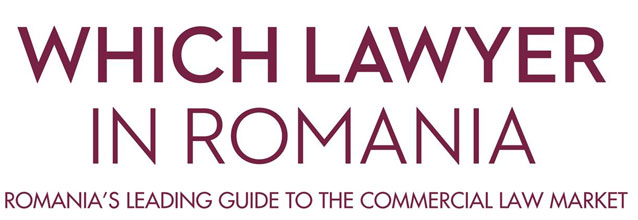
Article by Antonia Nica, Senior Associate and Dana Toma, Counsel, WOLF THEISS
Despite a string of high-profile fire tragedies over the past two decades, from industrial sites to public venues, Romania continues to struggle with fire safety compliance. Each incident exposes not only persistent gaps in regulatory enforcement, but also ignorance and, in some cases, naivety among market participants.
Because the market is not always fully transparent and often favours half-truths, several persistent myths regarding fire safety continue to expose owners, investors, landlords and tenants to significant risks – ranging from administrative fines and potential business closure (depending on the activity carried out) to possible criminal liability, which cannot be excluded.
This article aims to examine three of the most common myths and debunk them.
Myth 1: Units under 600 sq m do not require a fire safety permit
Law no. 307/2006 on fire safety measures (the "Fire Safety Law") provides that the categories of constructions and refurbishments requiring authorisation from a fire safety perspective are approved under Government Decision No. 571/2016 on categories of constructions and works subject to fire safety endorsements and permits. The methodological norms implementing the Fire Safety Law, approved under Order No. 180/2022 (the "Methodological Norms"), further detail the conditions under which fire safety endorsements and fire safety permits may lose their validity.
The area threshold regulated under Government Decision No. 571/2016 (e.g. an area equal to or greater than 600 sqm for offices, retail, education, tourism, warehouse or production facilities) should be regarded only as the first level of assessment and not a safe harbour.
If critical fire safety elements of a building are altered after obtaining a fire safety permit, the initial fire safety permit or endorsement may lose its validity if the original conditions on which it was issued are no longer met. Such alterations may include changes affecting fire resistance, fire spread limitation, user evacuation, firefighter safety, water or energy supply for fire systems or increased use of combustible materials.
In practice, if such elements are envisaged to be altered, this means:
-
a new technical file must be prepared and verified by an accredited fire safety engineer, drafted only with respect to the premises where the alterations are planned;
-
as a general rule, a new fire safety endorsement must be obtained before the start of construction works; and
-
most likely, a new fire safety permit will be required before reopening, even if an earlier permit covered the original construction.
Failing to obtain the fire safety permit can attract fines ranging from RON 20,000 (approx. EUR 4,000) up to RON 50,000 (approx. EUR 10,000).For certain categories of spaces and under certain conditions, fire safety authorities may order the cessation of business operations within the respective premises until compliance with the legislation is restored. In addition, such failure may invalidate the fire safety permit for the entire building and may expose the occupant to liability towards the landlord or other tenants. Insurers also tend to reject fire-related claims for compensation when the legal chain of permits is broken.
Thus, even if one intends to perform alterations within a space smaller than 600 sq m, if it is located within an authorised building, a proper analysis must be conducted to determine whether a new fire safety endorsement and/or permit is required. To avoid unwanted liability, we recommend actively engaging with the legal and technical specialists, as well as with the fire safety authorities, to confirm if the envisaged alterations necessitate a new permit or endorsement.
To sum up, a modest floor area is not a shield for one's investment if alterations could reset the permitting clock and create liability.
Myth 2: The landlord is always responsible for the fire safety permit; tenants can relax
The Fire Safety Law requires lease agreements to expressly allocate fire safety liabilities between the contracting parties. While it is generally accepted that the landlord should obtain the fire safety permit for the entire building or common areas, conflicts often arise in the absence of a clear contractual framework regarding fit-out works carried out during the lease term. Specifically, disputes occur over which party is responsible for obtaining the fire safety permit for such works.
The Fire Safety Law focuses on the beneficiary of the investment as the responsible party for permitting, rather than the owner registered in the Land Book. The beneficiary may be either the tenant or the landlord, depending on the contractual provisions and factual circumstances.
-
The landlord may be considered the beneficiary since they are the registered owner of the building subject to fit-out works. This interpretation is reinforced if the lease agreement obliges the tenant to return the premises in an "as is" condition at the end of the lease.
-
Conversely, if the tenant finances and executes the fit-out works, they may be considered the beneficiary, as they are the party actually executing or commissioning the works, bearing the associated costs and ultimately occupying and using the altered leased premises. This interpretation may be further reinforced if the lease agreement obliges the tenant to remove all fit-out works upon lease termination.
This allocation matters when drafting and negotiating leases, as well in divestment scenarios. The safest way to avoid disputes, residual liabilities or operational interruptions, is to include clear clauses that:
-
allocate clear responsibilities for fire safety obligations between landlord and tenant;
-
clearly identify the “beneficiary” for each scope of works;
-
oblige the beneficiary to secure the fire safety endorsement before construction and the permit before operating in the space;
-
carve out specific indemnities for losses triggered by fire safety permit failure, where commercially achievable; and
-
address the need for re-permitting when tenant removal works are required and coordinate timing with obtaining endorsements/permits.
Myth 3: A fire safety permit must cover the entire building; partial permitting is not allowed
The Methodological Norms expressly allow partial permitting when certain criteria are met.
If a mixed-use or monofunctional building is already in use and part of it is to be refitted or have its destination changed, one may apply for an annex to the existing fire safety permit rather than re-permitting the entire building.
If the building was not previously authorised and falls within categories requiring a fire safety permit, partial permitting is still possible provided that:
-
the space qualifies as a fire compartment or is delimited by construction elements similar to a fire compartment; and
-
the fire safety scenario assesses the impact of alterations or change of use on the fundamental fire safety requirements of the entire building.
Partial permitting is particularly useful for multi-tenant assets and phased redevelopments. Investors should budget for the additional consultancy effort required to demonstrate that “islanding” the work zone does not dilute fire safety performance elsewhere.
Turn myths into compliance – and competitive edge
Reliance on these myths can easily jeopardise investments. In today’s cautious market, fire safety compliance is no longer a mere formality; it is a business advantage that protects people, capital and asset value. Myths should not undermine an investor's position.



 October 07, 2025 12:34
October 07, 2025 12:34 










